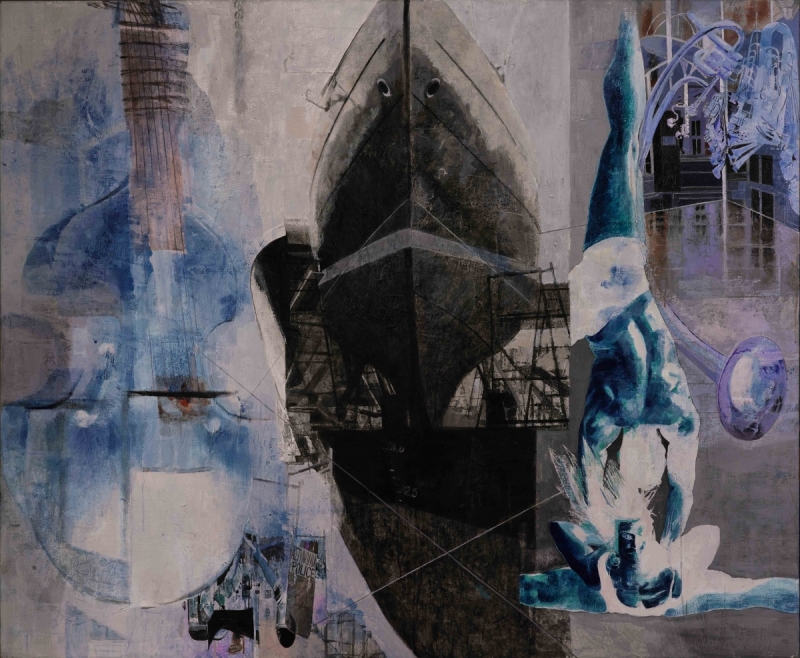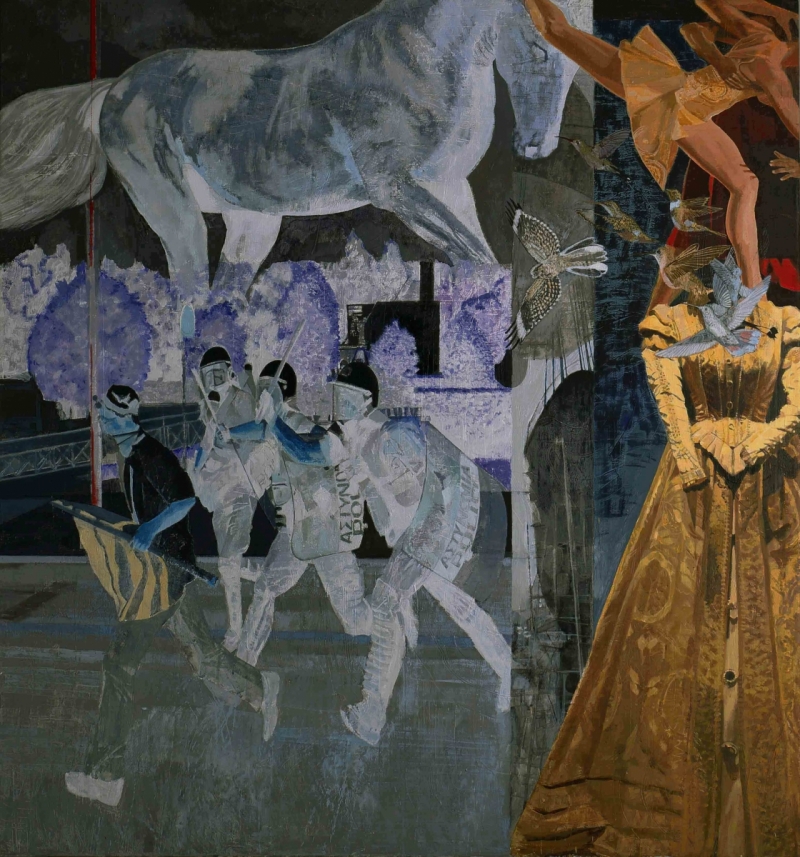
Helene Pavlopoulou: Dithyrambs of Liberty
Helene Pavlopoulou's Dithyrambs of Liberty series fits into the post-modern art paradigm in that it is inclusive of other cultures and periods. Globalization with its many cultural influences has impacted not only her work, but that of most artists around the world. This blurring of borders, geographies, cultural tendencies, and categories has been the cause for Pavlopoulou’s fluid re-creation of an artistic language that addresses contemporary issues like alienation, the electronic revolution, and political turmoil.
This painting installation series alludes to many philosophical tracts including Plato's Allegory of the Cave in his Republic (520-514BC) in which Socrates narrates to Plato’s brother Glaucoma the story of the prisoners. Here, he likens those not educated in the theory of forms to physically restricted prisoners in a cave who can only see their shadows. This allegory betrays his belief that the sensate world is only a copy of the real one that can only be understood through the intellect. As seen in Pavlopoulou's paintings this idea is evidenced in her motifs that are sometimes painted opaquely and at others rendered only through line or as negative shapes thus remain shadows. Plato's idea is also found in her references to the virtual world that can be analogized to the shadows, and that through manipulation, alienates us.

Her imagery also demonstrates a palimpsest of cultural and social as well as historic elements that combined in each canvas, create powerful statements. The historic past is rendered solid and the present as mere shadow similar to digital images. The canvases are divided into painted portions like Futurist rays allowing us a glimpse of spaces that contain part of large ships, musical instruments and horses painted in negative grey and blue.
The instrument, the ship and horse are modes of travel and the riot police uniforms and Renaissance gown are each signifiers of present and past respectively. Pavlopoulou seems to be saying that yesteryear was a more authentic world, as its weightier appearance suggests, and that of today, is flimsy like Plato’s shadows in the cave. The present collides with past. Historic past is rendered solid and the present as mere shadow similar to digital images.
